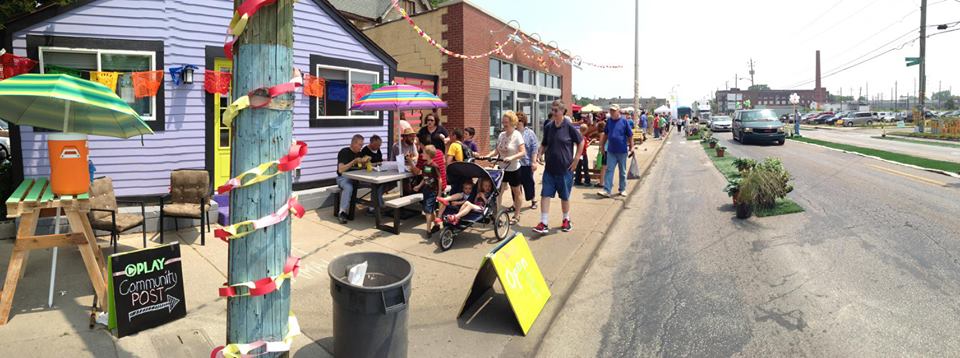
Neighborhood Decline and Rebirth
Neighborhoods that grew up as workforce housing supporting nearby industry declined as the jobs left. The resulting decrease in homeownership and population led to increasing vacancies, brownfields, and unemployment. The worst days appear to be behind, however, as significant redevelopment efforts are currently underway.
Transit Ridership
IndyGo Route 8 along Washington Street has the highest ridership in the system, with over 1 million riders in 2009 and 1.2 million in 2008 (about 12 percent of the entire IndyGo system). In 2013, the service was upgraded to 15 minute headways on East Washington Street, and runs from 4:45am to midnight on weekdays, suggesting a high potential for transit-oriented development.
The corridor, however, has little appropriate infrastructure to support this ridership, with few bus shelters, an inhospitable pedestrian environment, and buses in mixed traffic. Though sidewalks are present, they are often narrow and not separated from the street, rendering them inaccessible when snow is plowed or during rain.
IndyConnect identified Washington Street as one of the first phases for upgraded transit in the city as the Blue Bus Rapid Transit Line, which could address transit service, as well as infrastructure improvements.
Employment
The nature of modern industry prefers suburban locations with easy truck access with large property lots to accommodate them. As large industrial employers have closed or moved-such as PR Mallory and RCA-large holes in employment and property remain. Today new jobs are moving in, such as Angie’s List, Indiana City Brewing, Tlaolli, Heldman Exteriors, and expansions by Horner Electric.
Zoning
Zoning is a critical implementation tool for land use planning, and its very use requires the adoption of a plan. Much of the corridor, however, is zoned industrial, which does not reflect the current land uses, which are more diverse and evolving, nor the area plans, which are more mixed-use in nature. Even where appropriately zoned, the code itself has a very suburban bias, and in most cases developing in a dense urban style, or even replacing an existing urban building, is illegal.
Inappropriate Suburbanization
Development over the past decades has increasingly trended suburban in nature, with single-story, low-quality design set back significantly from the street. Large parking lots and lawns dominate the streetscape and the buildings have little if any connection to sidewalks and transit ridership. This trend is not unique to East Washington Street or to Indianapolis, but nowhere has the suburbanization of urban corridors proved successful or sustainable.